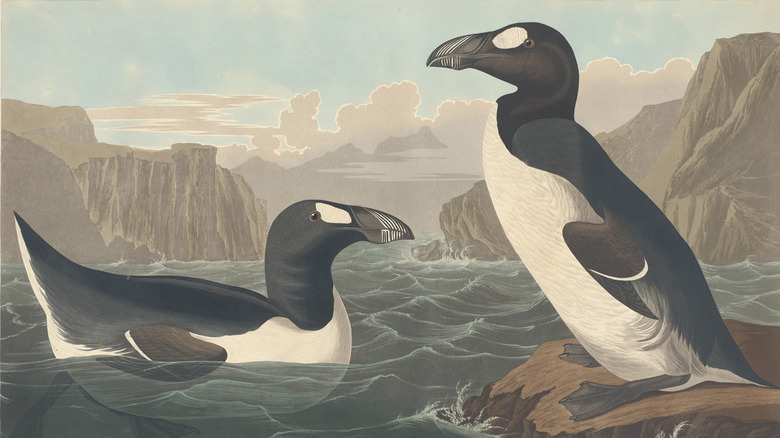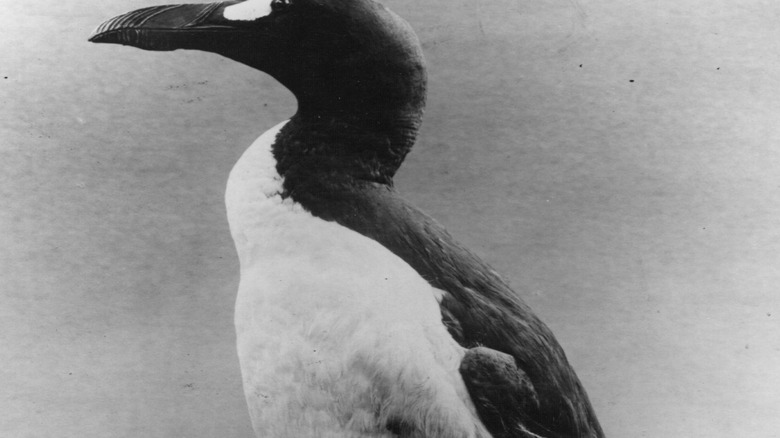The Tragic Reason The Great Auk Went Extinct
It is commonly said that dodos were the first animal to go extinct at the hands of humans after we hunted them into oblivion in the 1600s, but this isn't really true. For starters, humans had likely caused countless species to go extinct long before that, but what's more, humans didn't really hunt those birds into oblivion. The real reason dodos went extinct is far more complex. However, the erroneous story of the dodo's extinction actually does apply to a different bird, which deserves to be better remembered: the great auk.
Auks are a group of diving seabirds native to the northern oceans. The most famous auks alive today are puffins, but there was once an auk twice as long as the largest puffins in existence. The great auk could reach 30 inches from tip to tail and lived along the rocky shorelines of the icy North Atlantic.
It looked a lot like a penguin. In fact, the name "penguin" was originally made up to refer to great auks, possibly coming from the Welsh "pen gwyn," meaning "white head", or the Latin "pinguis," meaning "plump." The great auk's scientific name, Pinguinus impennis, reflects this. Later on, European explorers in the Southern Hemisphere began using the name for the birds we now call penguins, but only because they resembled great auks. Penguins are now some of the most beloved birds in the world, but hardly anyone seems to know the great auk because we killed every last one of them over 180 years ago.
Why humans killed all the great auks
The largest colony of great auks was in Newfoundland, particularly on the small Funk Island, which was said to have so many of the birds that a person could not take a step without running into one. The Beothuk people, a local indigenous group, hunted them to some extent, but mainly to use their eggs in religious rituals. It was only in the 16th century, when French and Portuguese sailors arrived in Newfoundland, that mass hunting of the birds began.
In order to survive around the polar zone, great auks had a very dense coat of down feathers, as well as a thick layer of fat, not unlike how whales protect themselves with blubber. Both of these assets were highly prized by hunters. Many sailors would also use the meat of great auks as food to sustain them on the return journey to Europe. Their eggs became popular collectors' items, ensuring that future generations were hunted just as much as those who lived.
Unfortunately, great auks were easy victims. Although they were expert swimmers, they were extremely clumsy when they waddled on land. They were killed in brutal massacres, where sailors would simply walk up to the birds, grab them, and strangle them, hauling their bodies away by the boatload. The last known breeding pair of great auks died on July 3, 1844 at the hands of fishermen in Iceland. A solitary male was reportedly seen in Newfoundland in 1852, but that was the last of them.

